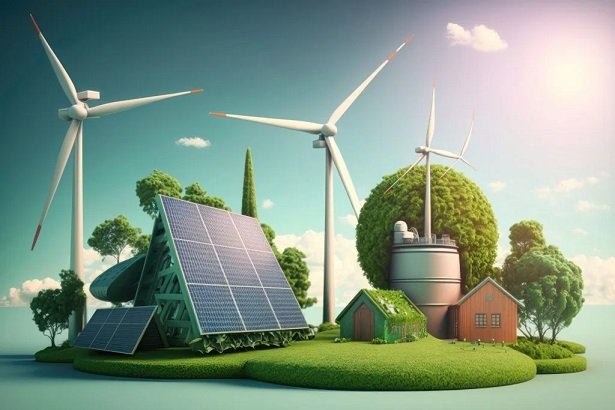In today’s world, the quest for sustainable energy sources has become increasingly urgent. Renewable energy solutions offer promising alternatives to traditional fossil fuels, presenting viable paths towards a cleaner and more sustainable future. This article explores various renewable energy solutions and their contributions to global energy needs.
Solar Power: Harnessing the Sun’s Energy
Solar power stands out as one of the most abundant and accessible forms of renewable energy. It harnesses the sun’s energy through photovoltaic cells, converting sunlight directly into electricity. This technology has seen significant advancements, making solar panels more efficient and cost-effective over time. From residential rooftops to vast solar farms, solar power plays a crucial role in reducing carbon emissions and dependency on non-renewable resources.
Wind Energy: Capturing the Power of Wind
Wind energy utilizes wind turbines to convert kinetic energy from the wind into electrical power. Wind farms, often located in areas with consistent wind patterns such as coastlines or plains, generate substantial amounts of electricity. Advances in turbine technology have improved efficiency and reliability, making wind energy a competitive option in many regions worldwide. It’s a clean, renewable resource that contributes to energy diversification and reduces greenhouse gas emissions.
Hydroelectric Power: Harnessing Water’s Force
Hydroelectric power harnesses the energy of flowing water to generate electricity. Dams and reservoirs control water flow, directing it through turbines to produce power. This technology is well-established and widely used, providing a steady and reliable source of renewable energy. Hydroelectric plants can vary in size from large-scale facilities like the Hoover Dam to smaller run-of-river projects, each playing a role in meeting energy demands while minimizing environmental impact.
Bioenergy: Utilizing Organic Matter
Bioenergy involves using organic materials, such as wood, crops, and organic waste, to produce heat, electricity, or biofuels. Biomass power plants burn organic matter to generate heat and electricity, while biofuels like ethanol and biodiesel offer alternatives to fossil fuels in transportation. Bioenergy can be a sustainable option when managed responsibly, promoting waste reduction and supporting rural economies through biomass cultivation and processing.
Geothermal Energy: Tapping into Earth’s Heat
Geothermal energy taps into heat stored beneath the Earth’s surface. It utilizes steam or hot water reservoirs to generate electricity or provide direct heating. Geothermal power plants can operate continuously, offering a stable and renewable energy source with minimal environmental impact once established. This technology is particularly valuable in regions with high geothermal activity, such as Iceland and parts of the United States.
Emerging Technologies: Innovating for the Future
Beyond established renewable energy sources, ongoing research and development are paving the way for new technologies. Innovations in tidal and wave energy aim to harness the power of ocean currents and waves, while advancements in solar thermal technologies enhance the efficiency of capturing and storing solar energy. Additionally, energy storage solutions, such as batteries and pumped hydroelectric storage, play critical roles in integrating intermittent renewable sources into existing power grids.
Benefits of Renewable Energy
The shift towards renewable energy offers numerous benefits beyond environmental sustainability. It reduces reliance on finite fossil fuels, enhances energy security by diversifying energy sources, and promotes economic growth through investments in green technologies and job creation. Moreover, renewable energy projects often have lower operational costs and contribute to local communities by providing clean energy solutions.
Challenges and Considerations
While renewable energy holds great promise, challenges remain. Initial costs of infrastructure and technology can be significant, requiring long-term investments and supportive policies to incentivize adoption. Variability in energy production from sources like wind and solar necessitates advancements in storage and grid management to ensure reliability. Additionally, environmental and social impacts, such as habitat disruption and land use conflicts, require careful consideration in project planning and implementation.
Conclusion
In conclusion, renewable energy solutions offer a pathway to a sustainable energy future by harnessing natural resources efficiently and reducing environmental impact. From solar and wind power to hydroelectric and bioenergy, each source contributes uniquely to global energy needs. Continued innovation and investment in renewable technologies are crucial for accelerating the transition towards a cleaner and more resilient energy system. By embracing renewable energy solutions, we can mitigate climate change, enhance energy security, and foster a more sustainable world for future generations.

